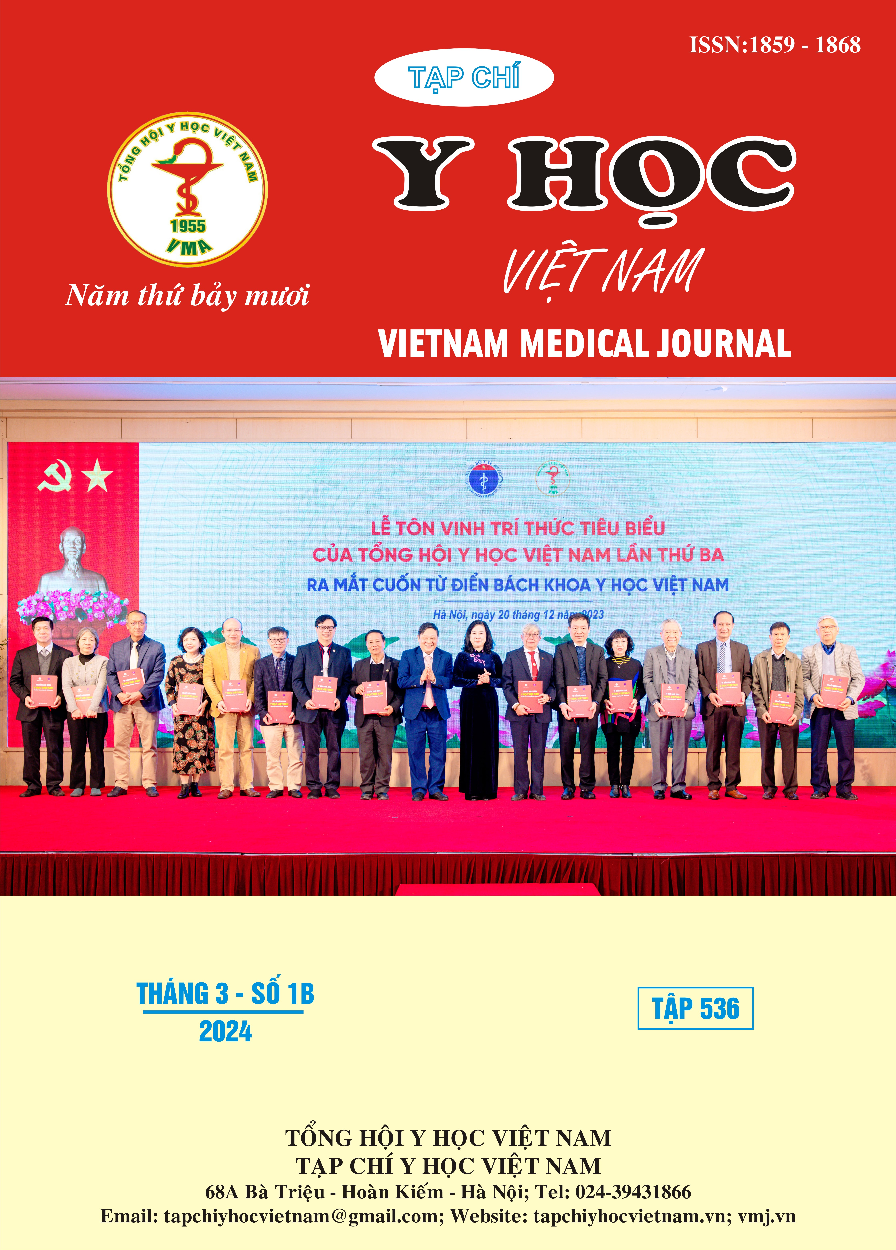STUDY ON CLINICAL CHARACTERISTICS AND LUNG CALCULATION IN AFTER Covid - 19 PATIENTS
Main Article Content
Abstract
Purpose: This article aims to describe the clinical characteristics of pulmonary sequelae of Coronavirus disease 2019 (COVID-19) and analyze the chest computed tomography (CT) images of patients with COVID-19 disease when discharged and after 3 to 6 months of follow-up. Materials and methods: Descriptive longitudinal study of a total of 235 patients with COVID-19 treated at National Lung Hospital and Phu Tho Provincial Hospital who were recruited and followed up for six months after discharge. Results: Most chest CT scans showed bilateral pulmonary lesions in the peripheral regions after 3 and 6 months of follow-up, appearing to disappear or remain with a tiny size. The most common CT findings were ground-glass opacities and parenchymal fibrous bands found in 213 patients (90,6%) and 33 patients (14,0%). After three months of follow-up, 212 patients observed had 110 (51,9%) ground glass opacity lesions and 81 (38,2%) parenchymal fibrous band lesions. After six months, 186 patients observed had 91 (48,9%) ground glass opacity lesions and 84 (45,2%) parenchymal fibrous band lesions. The number of damaged lung lobes on CT scan decreased after 3 months and after 6 months there were ground glass lesions, increasing the organization of parenchymal fibrous lesions but forming smaller fibrous bands. Total CT score increased gradually, applying in disease severity at both 3-month follow-ups (P< 0,001) and 6-month follow-ups (P<0,001). Patients with varying degrees of disease represent diverse CT image patterns that change over time. Conclusion: The most common pulmonary injury characteristics on CT scans include the disappearance of ground-glass opacity lesions and the miniaturization of parenchymal fibrous band lesions after 3 and 6 months of follow-up. Patients with different degrees of disease exhibit various CT changes, clearly indicating the need for long-term observation of patients with severe and critical conditions.
Article Details
References
2. A. Díez Tascónb , L. Ibánez ˜ Sanz a , S. Ossaba Vélez b “Radiologia (Engl Ed) Radiologic diagnosis of patients with COVID-19E. Martínez Chamorroa”. 2021 Jan-Feb;63(1):56-73. doi: 10.1016 /j.rx.2020.11.001. Epub 2020 Nov 24).
3. Martínez Chamorro, E et al. “Radiologic diagnosis of patients with COVID-19.” “Diagnóstico radiológico del paciente con COVID-19.” Radiologia vol. 63,1 (2021): 56-73. doi: 10.1016/j.rx.2020.11.001
4. Van den Borst B, Peters JB, Brink M, Schoon Y, et al. “Comprehensive health assessment three months after recovery from acute COVID-19”. Clin Infect Dis. (2020) 73:e1089–98. doi: 10.1093/cid/ciaa1750
5. Liu C, Ye L, Xia R, et al. “Chest computed tomography and clinical follow-up of discharged patients with COVID-19 in Wenzhou City, Zhejiang, China. Ann Am Thorac Soc”. (2020) 17:1231–7. doi: 10.1513/AnnalsATS.202004-324OC PubMed Abstract | CrossRef Full Text | Google Scholar
6. Tabatabaei SMH, Rajebi H, Moghaddas F, et al. “Chest CT in COVID-19 pneumonia: what are the findings in mid-term follow-up? Emergency Radiol”. (2020) 27:711–9. doi: 10.1007/s10140-020-01869-z
7. Pan F, Ye T, Sun P, et al. “Time course of lung changes at chest CT during recovery from coronavirus disease 2019 (COVID-19). Radiology”. (2020) 295:715–21. doi: 10.1148/radiol.2020200370
8. Zhang P, Li J, Liu H, et al. “Long-term bone and lung consequences associated with hospital-acquired severe acute respiratory syndrome: a 15-year follow-up from a prospective cohort study. Bone Res.” (2020) 8:8. doi: 10.1038/ s41413-020-0084-5


